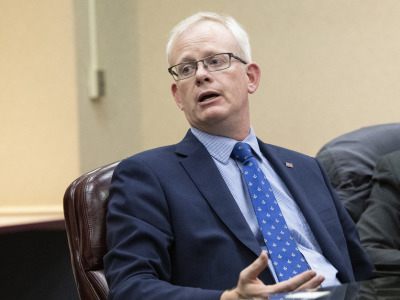Advocates say the Department of Agriculture’s ReConnect program is working when it comes to building out high-speed internet technology into rural America, but say higher speeds and more government funding will be needed in the years ahead.
Announced in December 2018, USDA launched the ReConnect pilot program making available $200 million in grants, $200 million in loan grant combinations, and $200 million in low-interest loans.
Projects funded through the program are required to serve communities with less than 20,000 people where internet service is slower than 10 megabits per second download and 1 megabit per second upload.
Approved projects must develop speeds of at least 25/3 Mbps, according to USDA.
Shirley Bloomfield, CEO of NTCA — The Rural Broadband Association said a strength of the ReConnect program has been the focus on who does and does not have broadband services.
“If there’s one thing that we’ve learned during this pandemic, holy cow it is that broadband is absolutely critical and we need to move as fast as we can as a country to get connectivity out there,” Bloomfield told Agri-Pulse.
Bloomfield praised the program for examining each project differently to determine whether the applicant deserved a grant, loan, or grant/loan combination as well as sending officials out to do field tests.

Shirley Bloomfield, NTCA — The Rural Broadband Association
“Which I think is really important because we’ve got to be so mindful that not allowing government resources, which are limited to overbuild existing resources,” Bloomfield stated.
But at the same time, she said the bureaucratic process of checking all the boxes is making the process “slower and more methodical than one would hope in a pandemic.”
One of the biggest concerns about deploying high-speed internet is overbuilding, providers getting money to fund a project where high-speed internet already exists.
On Nov. 23, the House Energy and Commerce Committee Chairman Greg Walden, R-Ore., sent a letter asking the Government Accountability Office, Congress’ government watchdog, to audit the ReConnect program. The E&C Committee has jurisdiction over communications issues, but not necessarily the Department of Agriculture.
Walden cited the $600 million from a 2018 spending bill used to stand up the program and another $1.45 billion appropriated in future legislation and said the committee had questions over the connection between the ReConnect program and other government rural broadband efforts.
“Given the need to ensure the most efficient and effective use of federal dollars to promote broadband infrastructure deployment and guard against waste, fraud, and abuse, we request an in-depth GAO audit of broadband support provided by the Rural Utilities Service (RUS),” the letter read.
To date, the first round of the ReConnect program invested $698 million in 79 high-speed internet infrastructure projects in 33 states. In the second round, the department announced $642 million for 83 projects in 34 states and territories. The two funding rounds combined total $1.34 billion, according to USDA.
USDA Rural Utilities Service Administrator Chad Rupe told Agri-Pulse awarding projects for infrastructure projects in a lot of areas that are previously undisturbed land can take time.
Interested in more coverage and insights? Receive a free month of Agri-Pulse.
“You’ve got a situation where you have to conduct environmental clearance, you have a lot of parties and stakeholders at the table, and we have to make sure when we build them out, they are built out to specifications and built out in a quality fashion,” Rupe said.
The department has created a mapping tool to show projects funded across the U.S. Rupe said it also must be realized the buildout is happening during a pandemic when some stakeholders are shutdown.

Chad Rupe, USDA
“They are having slow communication — a whole series and host of things that complicate a normal buildout are happening at the same time,” he said.
While supporting the program, Janie Dunning, a broadband consultant for the Missouri Farm Bureau, said continued government funding is needed for high-speed internet deployment as well as speeds higher than a minimum of 25/3 Mbps must be achieved moving forward.
“That’s not going to be adequate,” Dunning told Agri-Pulse. “I think we found that out with COVID and the need to work remotely, the need to have educational opportunities, (and) the need to have people who can do their business out of their home.”
Dunning argued fiber, cables buried in the ground or hung on poles to carry broadband service, is “future proof” technology that helps increase speeds so certain people aren’t left behind.
“We do not care what type of technology is used, but it has to be able to carry the speeds without interruption or it will not be adequate,” she said.
While noting ongoing challenges with deploying rural broadband, Rupe said he felt USDA has done a good job addressing “middle mile” fiber deployment — connecting providers to customers — in rural communities.
Having worked for USDA’s Rural Development office for several years before consulting MOFB, Dunning believes USDA, regardless of administration, will prioritize broadband into the future.
Bloomfield feels the incoming Biden administration “understands the urgency” regarding the need to get high-speed internet deployed across America and urges them to move ahead with programs like the ReConnect.
For more news, go to www.Agri-Pulse.com.


